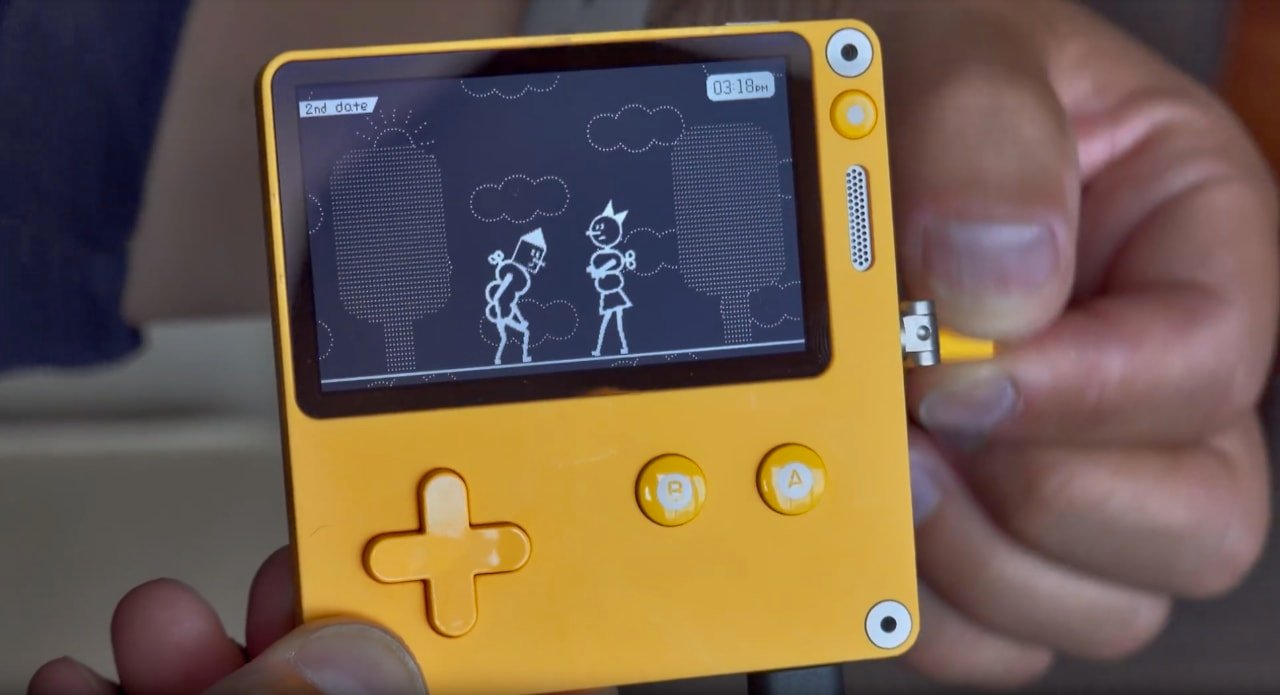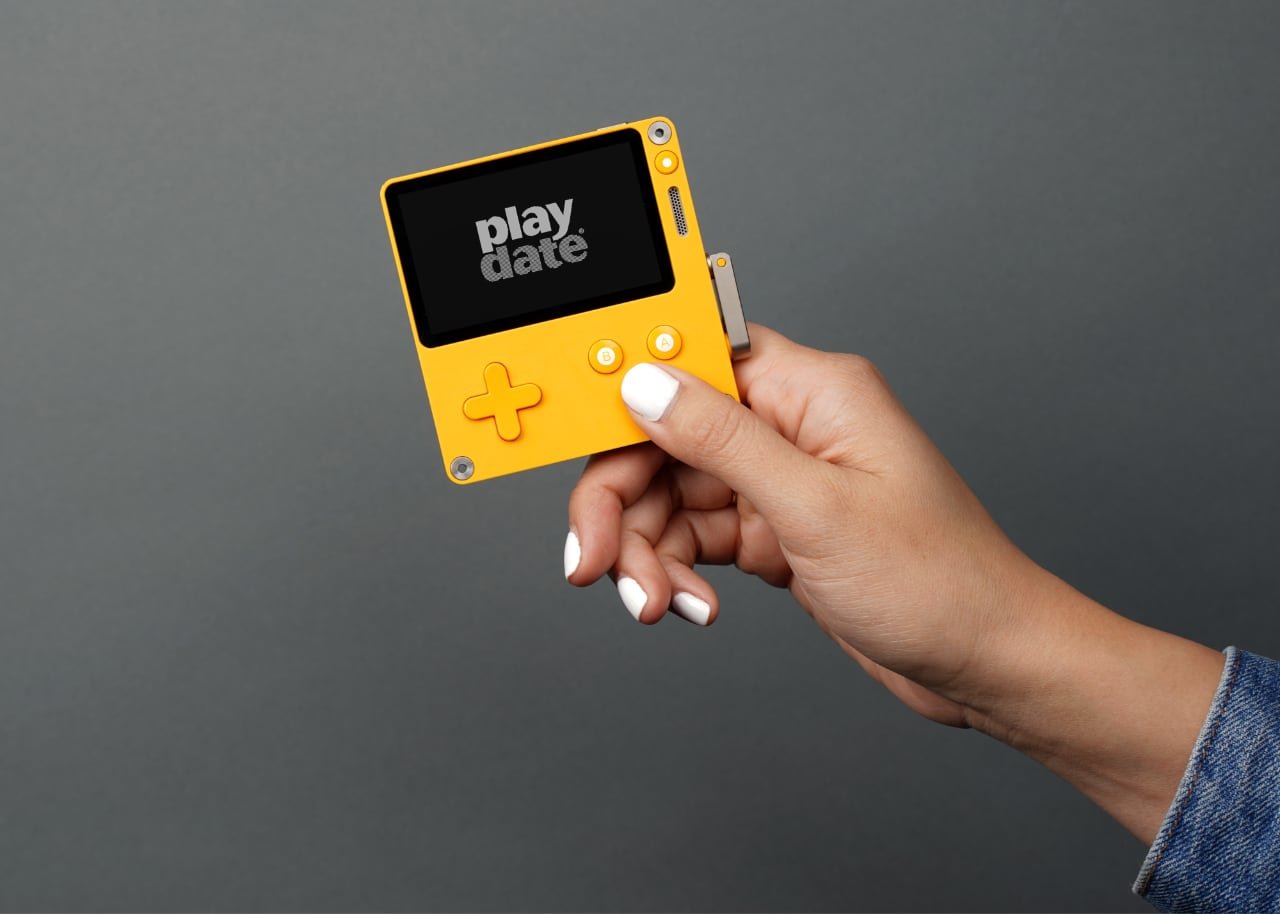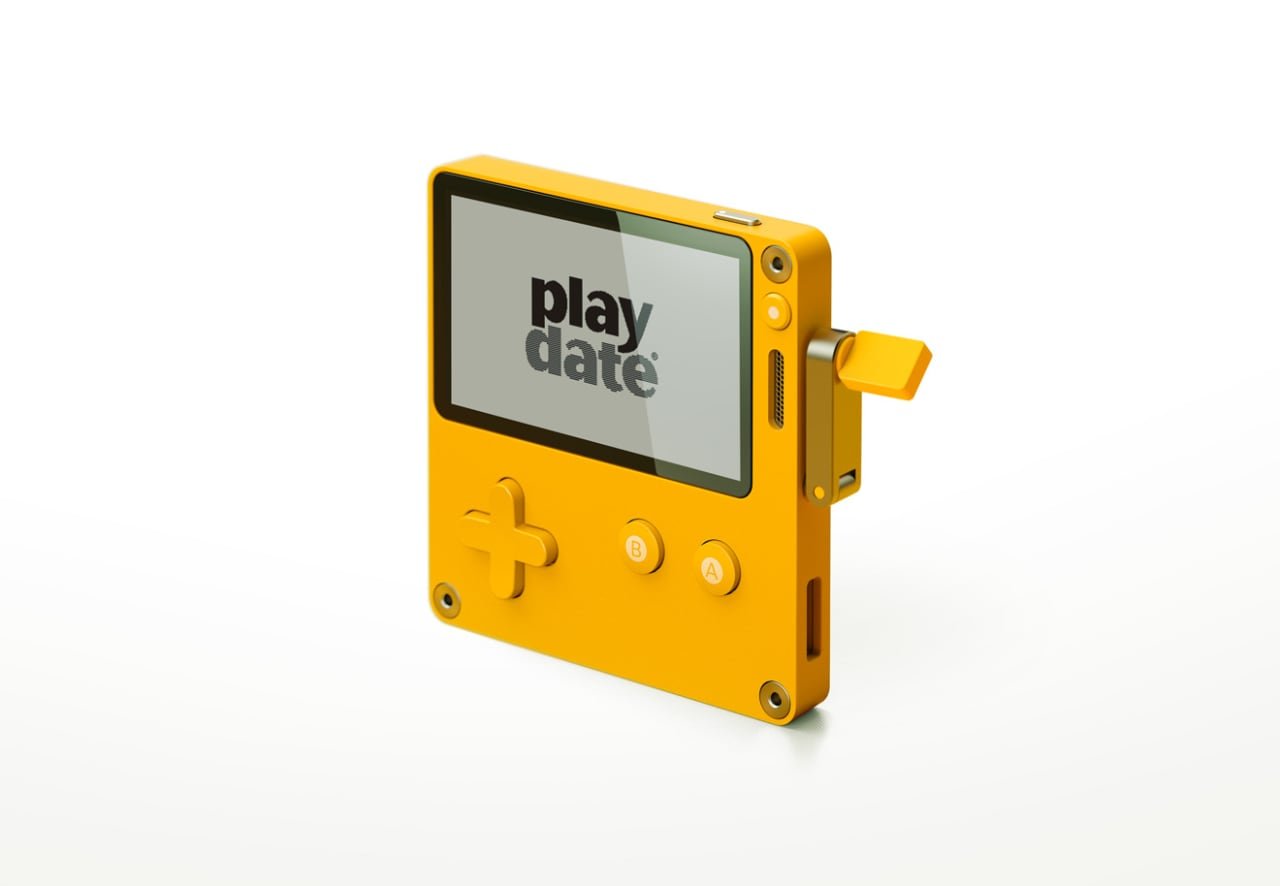
Playdate News Roundup: June 2019
First Gameplay Footage, Processor Specs, and The Talk Show appearance
It’s been just over a week since Panic’s Playdate was announced, and we’ve learned some more about crankified console since the teaser, so we’re rounding up what we know so far here.
First gameplay footage
We’ve seen the first gameplay footage of the Playdate, featuring Crankin’s Time Travel Adventure. The Playdate is Keita Takahashi’s own DVT1 prototype 1 and was recorded and posted on YouTube by Kohichi Aoki.
The live demo of Crankin’s Time Travel Adventure mostly matches the content we’ve already seen on the play.date teaser page. The demo features three dates, where Crankin rushes to his date with Crankette—but we see a player actually cranking the Playdate for the first time.
Processor Specs
The attentive @MstrBlinky on twitter sleuthed and found that Playdate is using an STM32 (ARM Cortex-M7) microcontroller—precisely the STM32F7, as revealed by Panic engineer Dave Hayden. The Playdate will run at 180 MHz, running at a lower voltage to allow for better battery life. App Developer @zhuowei pulled an interesting stat based on this reveal: The Playdate has 62x the CPU power of a Game Boy Advance.
Most games will run at 30 FPS, but the Playdate’s OS will display some transitions at higher than the 30 FPS framerate—it’s presently unknown if developers will be able to leverage this too (such as, in the C SDK).
The Talk Show
Panic’s Cabel Sasser, Steven Frank, and Greg Maletic joined John Gruber for an episode of The Talk Show. Clocking in just over two hours—because when is The Talk Show podcast ever brief—it’s packed with details about Playdate. Here are some interesting details from the podcast:
- The Playdate was inspired by the early Nintendo Game & Watch games, which inspired Panic’s use of the 1-bit Sharp Memory LCD display.
- Cabel revealed that Playdate’s codename is Asheville, named after the first time the Panic crew met Teenage Engineering at Moogfest, an electronic music festival.
- Panic deliberated a long time on the button naming, landing on the classic
AandB,but not without deliberating on other possible buttons, including different dots, shapes, and lines.AandBare nostalgic and easily communicate button meanings. - Crankin’s Time Travel Adventure was selected as the feature game for the play.date announcement page, because it featured the strongest use of the crank.
- The environment in Crankin’s Time Travel Adventure was built in Maya, and rendered down to frames with the 1-bit artwork you see on the Playdate.
Game Sideloading + SDK
We know that Playdate is shipping with its “Season One” of games—twelve games, one each week. In the teaser site, it’s not clear about adding new games to the device outside of what ships with Season One. We now know that users will, at the very least, be able to Sideload games onto the Playdate. There’s no word yet about a Season Two of games, or any sort of Playdate Game Store.
Additional SDK information was also revealed in The Talk Show:
- The SDK is composed of a compiler, and a device simulator—a playdate which runs on the screen.
- You can use Lua or C to program your game. If you need to extract additional performance from primarily Lua-based game, you can also write a C library to extract extra performance.
- Games can presently be loaded onto the Playdate by USB via a Coda 2 extension (but also the new Panic editor, too).
We’ll keep up with Playdate SDK coverage here, as new information becomes available.
Playdate is undoubtedly shaping up to be revolutionary—we’re more excited than ever. You can follow all of our Playdate coverage here in the Playdate tag. You can also keep with the latest by following us on Twitter, @missingquests.
-
DVT is a stage of the hardware design process, an acronym for “Design Validation Test.” DVT is the phase of hardware design where the design of the unit is considered to be production-worthy and where full end-to-end functional testing begins. The Playdate prototype in the video is labeled “DVT1 - Evaluation Only”. If you’re somehow still interested, here’s a layman’s deep dive on this phase of product development. ↩

